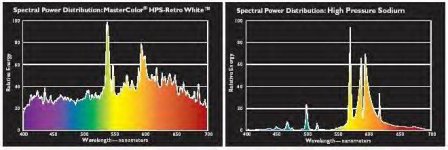L
LJB
First the typical information on hand about green light and photosynthesis:
Google search results for "plants green light"
second hit: http://biology.clc.uc.edu/Courses/Bio104/photosyn.htm
From the Biology Dept. at UC-Clermont:
******
Note the date of the first study, it goes all the way back to 2000. I included a couple of short excerpts, but full free text pdfs are at both links.
Why are higher plants green? Evolution of the higher plant photosynthetic pigment complement. J. N. NISHIO. Department of Botany, University of Wyoming
Plant, Cell and Environment (2000) 23, 539-548
and
Green Light Drives Leaf Photosynthesis More Efficiently than Red Light in Strong White Light: Revisiting the Enigmatic Question of Why Leaves are Green
Ichiro Terashima1,*, Takashi Fujita1, Takeshi Inoue1, Wah Soon Chow2 and Riichi Oguchi1,2,3
Plant and Cell Physiology 2009 50(4):684-697; doi:10.1093/pcp/pcp034
Plant and Cell Physiology Advance Access originally published online on February 25, 2009

Fig. 2 Comparison of action spectrum and quantum yield for photosynthesis with the chloroplast absorption spectrum. Quantum yield of photosynthesis is the moles of carbon fixed per mole of photons absorbed. From Taiz and Zeiger, 1991.
Google search results for "plants green light"
second hit: http://biology.clc.uc.edu/Courses/Bio104/photosyn.htm
From the Biology Dept. at UC-Clermont:
Chlorophyll looks green because it absorbs red and blue light, making these colors unavailable to be seen by our eyes. It is the green light which is NOT absorbed that finally reaches our eyes, making chlorophyll appear green. However, it is the energy from the red and blue light that are absorbed that is, thereby, able to be used to do photosynthesis. The green light we can see is not/cannot be absorbed by the plant, and thus cannot be used to do photosynthesis.
******
Note the date of the first study, it goes all the way back to 2000. I included a couple of short excerpts, but full free text pdfs are at both links.
Why are higher plants green? Evolution of the higher plant photosynthetic pigment complement. J. N. NISHIO. Department of Botany, University of Wyoming
Plant, Cell and Environment (2000) 23, 539-548
...full sunlight provides significantly more energy than can be utilized by the photosynthetic electron transport system of most C3 leaves, so energy dissipative mechanisms are important (Demmig-Adams & Adams 1992), and such dissipative mechanisms are more prevalent at the top of the leaf. Hence, under greater than saturating light, the percentage of absorbed green light utilized for photosynthesis must be higher for green light than for blue or red light, since more blue and red light are absorbed by the top of the leaf.
and
Green Light Drives Leaf Photosynthesis More Efficiently than Red Light in Strong White Light: Revisiting the Enigmatic Question of Why Leaves are Green
Ichiro Terashima1,*, Takashi Fujita1, Takeshi Inoue1, Wah Soon Chow2 and Riichi Oguchi1,2,3
Plant and Cell Physiology 2009 50(4):684-697; doi:10.1093/pcp/pcp034
Plant and Cell Physiology Advance Access originally published online on February 25, 2009
In summary, for strongly absorbed light such as red or blue, the sieve effect decreases absorptance considerably, whereas the détour effect increases absorptance marginally. On the other hand, for green light, loss in the efficiency of absorptance by the sieve effect is small, while gain in absorptance by the détour effect is large. Consequently, green leaves absorb much green light. Typical values of absorptance at 550 nm range from 50% in Lactuca sativa (lettuce) to 90% in evergreen broad-leaved trees (Inada 1976). The corresponding absorptance values for blue and red lights range from 80 to 95%. Moreover, as already mentioned above, it has been clearly shown that the quantum yield of photosynthesis based on absorbed photosynthetically active photon flux density (PPFD), measured at low PPFDs, was comparable between green and red light. When measured in leaves grown under natural conditions, particularly for those of trees, the quantum yield of green light is considerably greater than that of blue light (Inada 1976), because some fraction of blue light is absorbed by flavonoids in vacuoles and/or carotenoids in chloroplast envelopes...
Fig. 2 Comparison of action spectrum and quantum yield for photosynthesis with the chloroplast absorption spectrum. Quantum yield of photosynthesis is the moles of carbon fixed per mole of photons absorbed. From Taiz and Zeiger, 1991.




